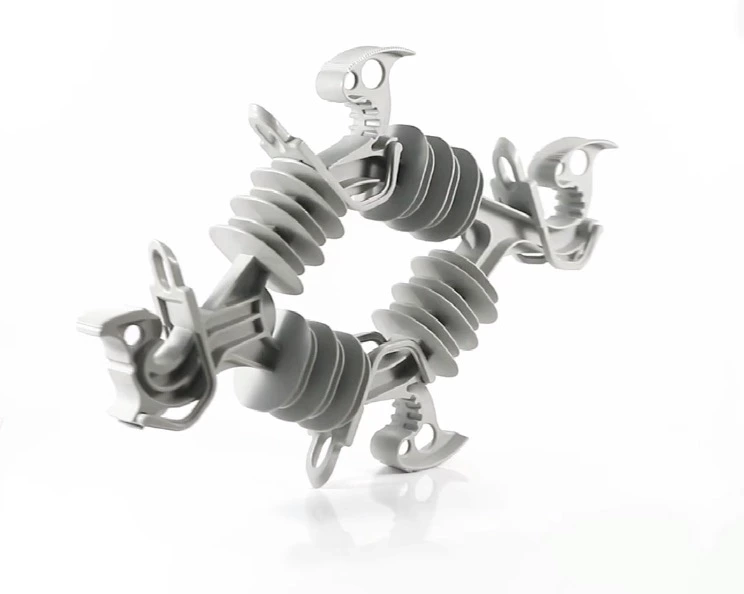The Difference Between Tension Clamp And Wedge Clamp
The selection of Suspension Clamp is mainly determined according to the different conditions of the power line conductor. There are two common situations:
1. The selection of line tension clamps when using LGJ and LJ conductors.
When using LGJ or LJ conductors, since the tension clamps are clamped on the outer diameter of the conductor when used, the type of tension clamp used should be selected according to the outer diameter of the conductor. For example, LGJ-185/30 conductor is used in the power line. After calculation, it can be known that its outer diameter is 18.88mm. From the above table, it can be known that the tension clamps that should be used are NLL-4, NLL-5 or NLD-4.
It should be noted here that the outer diameter of the LGJ conductor is the outer diameter of the conductor calculated by adding the aluminum wire cross section of 185mm and the steel core cross section of 30mm, not simply calculated by the aluminum wire cross section of 185mm. LGJ conductors of the same specification have different steel core cross sections and conductor outer diameters, so the tension clamps used for LGJ conductors of the same specification are not necessarily the same. If it is an LJ conductor, since it has no steel core, the cross section of the aluminum stranded wire can be used to calculate the outer diameter of the conductor.
In addition, since the tension clamp is clamped on the outer diameter of the conductor, we require the outer layer of the LGJ or LJ conductor to be wrapped with aluminum tape during construction to prevent damage to the conductor during crimping.
2. Selection of line tension clamps when using insulated conductors.
In densely populated, tree-rich, and polluted areas, we are increasingly using insulated conductors to replace bare conductors. Compared with bare conductors, it has the advantages of high safety and reliability, reduced line loss, and less corrosion of the conductor. When using insulated conductors, we need to pay attention to the fact that the tension clamp is clamped on the outer diameter of the "conductor" rather than the outer diameter of the "conductor". Therefore, the model of the tension clamp used should be selected according to the outer diameter of the conductor rather than the outer diameter of the conductor. For example, in the power line, JKLGYJ-150/8 steel core reinforced cross-linked polyethylene insulated overhead cable is used. After calculation, it is known that its conductor outer diameter is 15.30mm. Adding its insulation thickness of 3.4mm and conductor shielding thickness of 0.5mm, it can be known that its conductor outer diameter is 23.1 mm. According to the above table, the tension clamp that should be used is NLL-5. If we choose the equipment clamp based on the conductor outer diameter of 15.30mm at this time, the selected equipment clamp will not be used.
In addition, when installing the tension clamp, we must tighten the screws evenly, and require that there is no increase in the stress of the wire at the contact surface between the installed wire and the metal original, so as to prevent the wire from being damaged by breeze vibration or other wire oscillation and ensure that the gripping force of the tension clamp on the wire is not less than 95% of the wire breaking force.

